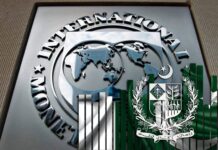GENEVA: World Trade Organisation (WTO) Tuesday estimated a drop of around 18.5 per cent in global trade on a year-on-year basis in the second quarter of this year due to coronavirus and lockdowns.
According to WTO, world trade fell sharply in the first half of the year, as the Covid-19 pandemic upended the global economy; however, WTO economists now believe that while trade volumes will register a steep decline in 2020, they are unlikely to reach the worst-case scenario projected in April.
The volume of merchandise trade shrank by 3pc year-on-year in the first quarter according to WTO statistics. Initial estimates for the second quarter, when the virus and associated lockdown measures affected a large share of the global population, indicate a year-on-year drop of around 18.5pc. These declines are historically large, but could have been much worse, said a press statement.
The WTO’s 20 April annual trade forecast, in light of the large degree of uncertainty around the pandemic’s severity and economic impact, set out two plausible paths: a relatively optimistic scenario in which the volume of world merchandise trade in 2020 would contract by 13pc, and a pessimistic scenario in which trade would fall by 32pc. As things currently stand, trade would only need to grow by 2.5pc per quarter for the remainder of the year to meet the optimistic projection.
However, looking ahead to 2021, adverse developments, including a second wave of Covid‑19 outbreaks, weaker than expected economic growth, or widespread recourse to trade restrictions, could see trade expansion fall short of earlier projections.
“The fall in trade we are now seeing is historically large – in fact, it would be the steepest on record. But there is an important silver lining here: it could have been much worse,” said Director-General Roberto Azevedo. “This is genuinely positive news but we cannot afford to be complacent. Policy decisions have been critical in softening the ongoing blow to output and trade, and they will continue to play an important role in determining the pace of economic recovery. For output and trade to rebound strongly in 2021, fiscal, monetary, and trade policies will all need to keep pulling in the same direction.”
In light of available trade data for the second quarter, the April forecast’s pessimistic scenario, which assumed even greater health and economic costs than what had transpired, appears less likely, since it implied sharper declines in the first and second quarters.
The Covid‑19 pandemic and associated containment efforts intensified in the second half of March. Strict social distancing measures and restrictions on travel and transport were fully in effect in most countries throughout April and May, and are now increasingly being relaxed.
These developments are reflected in a variety of economic indicators which, taken together, suggest trade may have possibly bottomed out in the second quarter of 2020. Global commercial flights, which carry a substantial amount of international air cargo, were down nearly three quarters (‑74pc) between 5 January and 18 April, and have since risen 58pc through mid-June (Chart 2).
Container port throughput also appears to have staged a partial recovery in June compared to May (Chart 3). Meanwhile, indices of new export orders from purchasing managers’ indices also started to recover in May after record drops in April (Chart 4). It is useful to keep in mind that these rebounds follow historic or near-historic declines, and will need to be monitored carefully before drawing any definitive conclusions about the recovery.
Looking ahead to next year, a slower-than-expected pace of economic recovery would weigh on trade growth. This possibility is illustrated by the dotted green line in Chart 1, which would see trade growth for 2021 come in at closer to 5pc, which would leave it well below the pre-pandemic trajectory. On the other hand, a quick return to its pre-pandemic trajectory would imply trade growth in 2021 of around 20pc, in line with the April forecast’s optimistic scenario. Monetary, fiscal and trade policy choices will play a significant role in determining the pace of recovery.
























